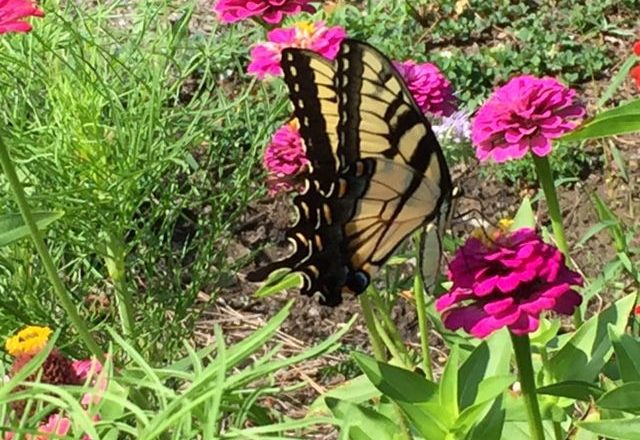MENU 800.444.1834
Visitor Guide
Rome – Bee City USA
Several Locations, Rome, GA
The City of Rome is recognized for encouraging pollinator habitats and is home to five public pollinator gardens. Bee City USA is a national initiative which aims to help fight “colony collapse disorder” and other threats to food and tree pollinators. All the gardens are designated stops on the Rosalynn Carter Butterfly Trail.
Chieftains Museum Demonstration Garden
Using documents related to the Chieftain Museum/Major Ridge Home, the museum created a garden that represents the various orchards that Major Ridge had on his land 200 years ago. Much of the original plantings on what was at one time a 200-plus acre plantation are in the garden including: plum, fig, peach, cherry apple, quince trees and 10 different types of blueberry bushes.; butterflies like bees, are pollinators.
The demonstration garden includes four distinct areas including a kitchen bed, a medicinal bed, an area with native plants and a commercial bed. Located just off Heritage Trail at Chieftains Museum/Major Ridge Home
Rome-Floyd ECO Center – Ridge & Valley Garden
This center hosts a myriad of educational programs on the ecology of the area and Northwest Georgia. Located outside the front of the center is a pollinator garden full of plantings native to the area and is maintained by local master gardeners. Located just off the Heritage Trail in Ridge Ferry Park.
As Time Goes By Garden – Clocktower Hill
This garden celebrates the changing of the seasons throughout Rome with blooms throughout the year. It is located at NE side of the Clocktower.
Bailey Park Garden – Beside Clocktower Hill
This garden graces the hill of the clocktower and provides a beautiful serene setting to enjoy the views from the hill.
Meditation Garden – Myrtle Hill Cemetery
The garden overlooking Myrtle Hill at the river confluence and is located on the lower entrance to Myrtle Hill Cemetery and to the upper right of the Mausoleum on Branham Avenue.
Tranquility Garden at Rome Labyrinth
The rock garden helps to beautify and control erosion on the hill beside the labyrinth; one of Rome’s most popular attractions. The Labyrinth of Rome was created as an adaptive reuse of what originally was an amphitheater built by the Works Progress Administration in the 1930s. The garden was added in 2019 and was designed by landscape artist, John Schultz.
Fun Fact: Rome and Floyd County are home to more than 70 private beekeepers.

